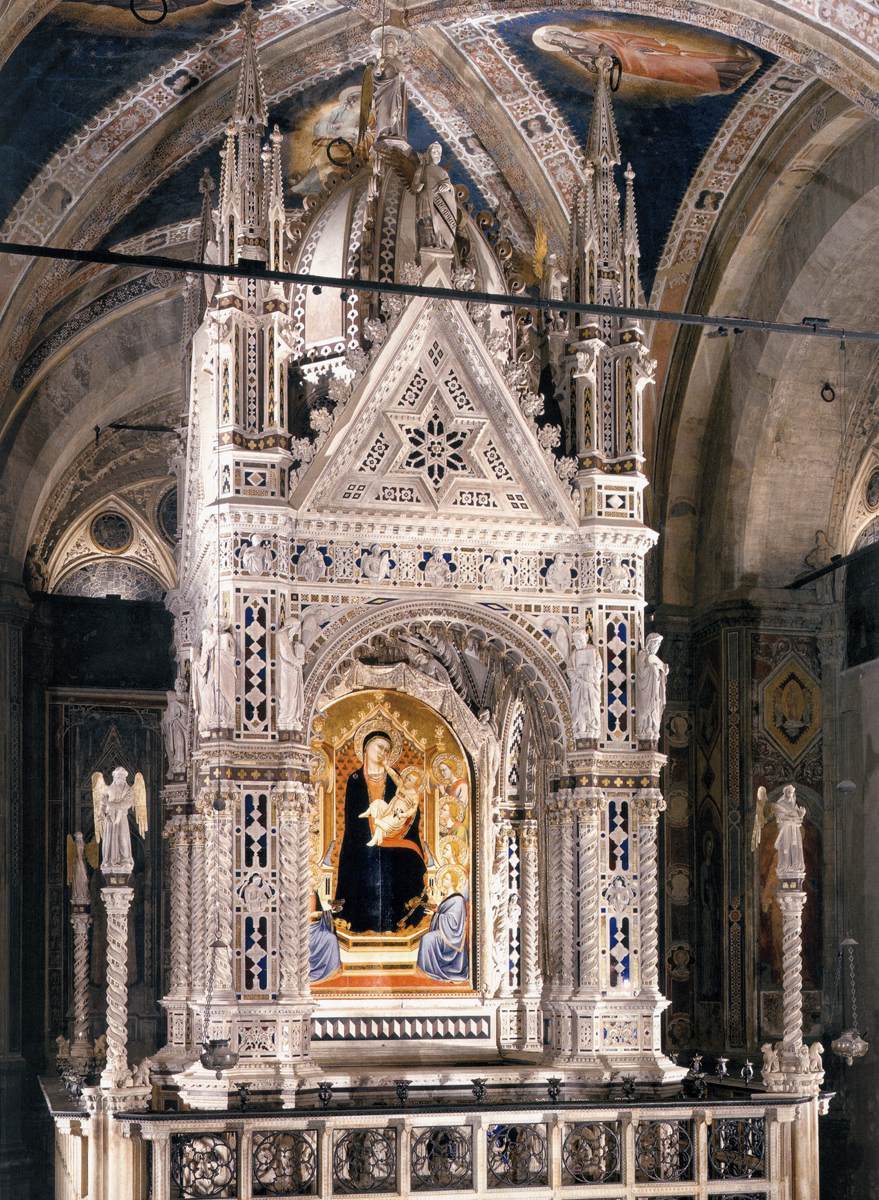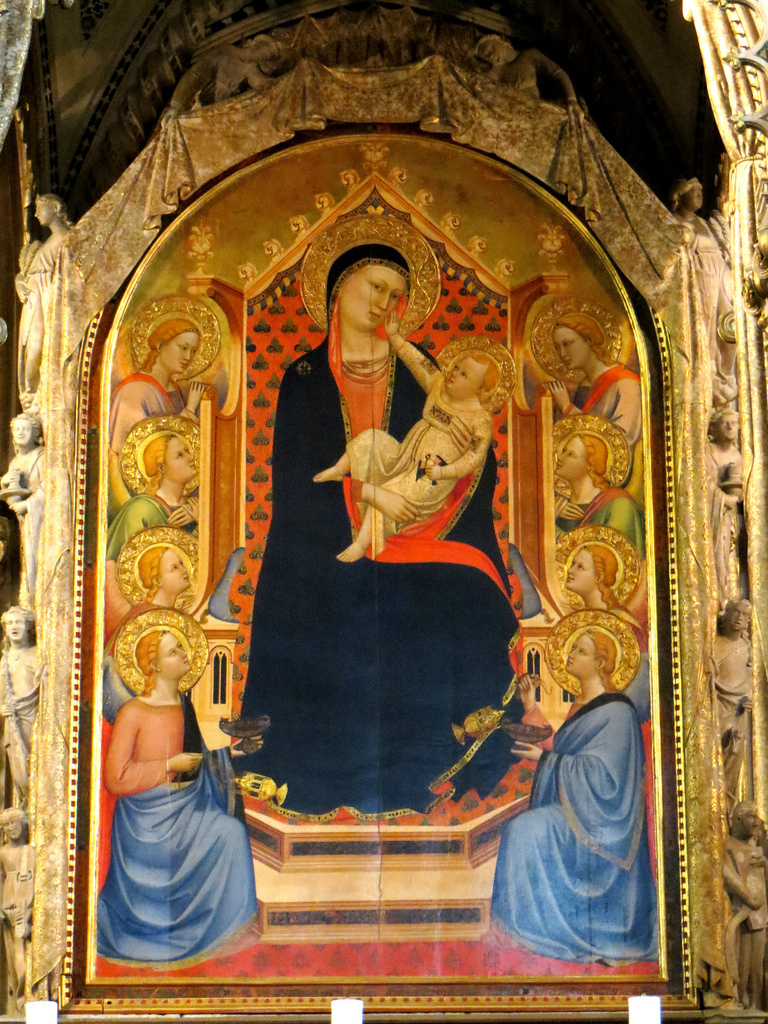Tuscany : The Madonna delle Grazie and Orcagna's Tabernacle
Bernardo Daddi’s Virgin, often called the Madonna delle Grazie (Madonna of the Graces) was the third rendition of this iconic image at Orsanmichele. Though the first two were both destroyed, the Madonna at Orsanmichele had reportedly been performing miraculous cures since 1292. It was believed that these miraculous abilities transferred between each reproduction of the painting, a concept that epitomizes the Italians’ belief in the power of imagery. A religious cult was soon founded around the adoration of the image, called the Campagnia della Madonna di Orsanmichele. The members of the confraternity were often called the Laudesi, referring to the lauds (hymns) that members pledged to worship the iconic painting with. Daddi completed the Madonna delle Grazie in 1347, just a few months before the first wave of the Black Plague hit Florence, killing over half of the city’s population within a year. This devastating loss shocked and terrified the Florentines, such an event could only be explained by the wrath of God. Many religious societies did exceedingly well, especially the Campagnia della Madonna di Orsanmichele, as they were flooded with donations, gifts, and new members seeking redemption or a cure.

Orsanmichele Tabernacle, Andrea di Cione (comonly called Orcagna). Church of Orsanmichele, Florence, c. 1355-59
The ornate tabernacle, created by the famous Orcagna, that now frames the image was commissioned by the Laudesi using this donation money. Such lavish materials, and the immense architectural structure were a show of power and piety for the confraternity. In an art historical context, Orcagna’s tabernacle also exhibits how truly significant this miraculous icon became to the Florentines. The popularity of Daddi’s Madonna and the cult surrounding it provides insight into the tone of the era; a society suffering through epidemic, death, and fear that is difficult for contemporary viewers to grasp. The Madonna delle Grazie and the church of Orsanmichele epitomizes the relationship between society, religion, the arts, and government that defined Early Renaissance Italy.

